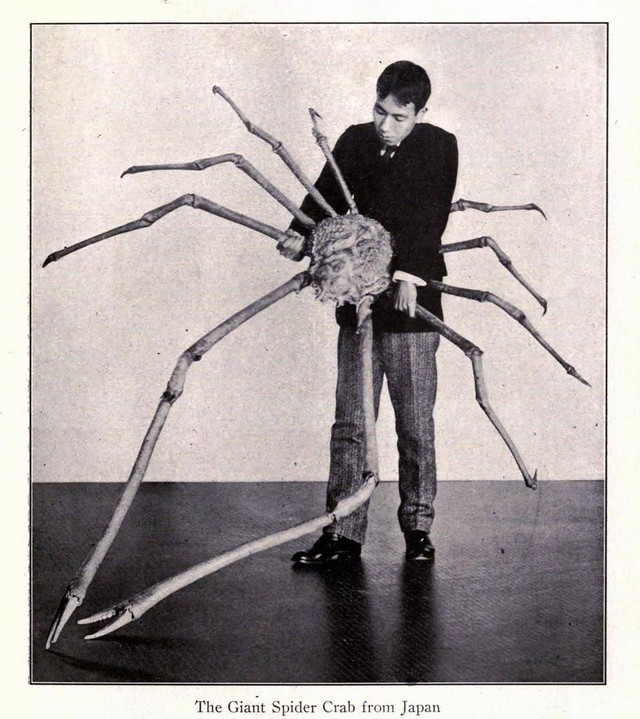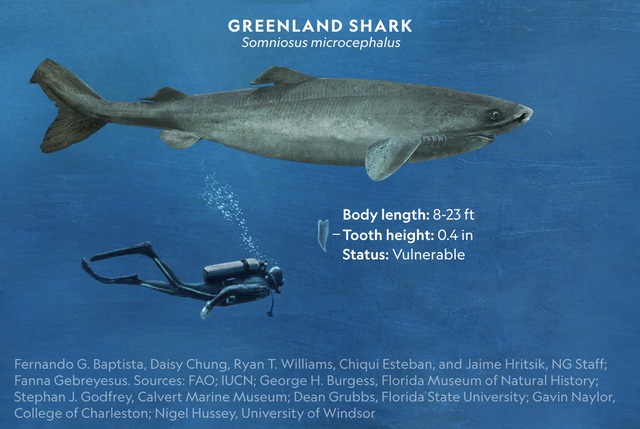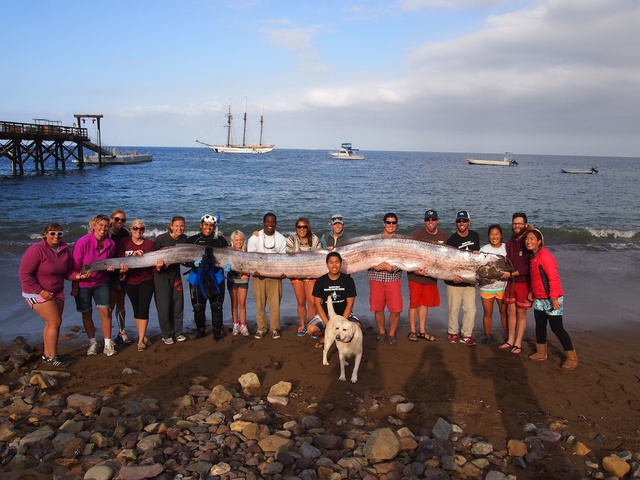Why are there so many giant creatures in the deep sea?
In the deepest and coldest areas of the ocean, there are a number of extremely large sea creatures, most of which are invertebrates. Compared with relatives living in other areas, their size proved to be much larger. And from the point of view of biology, this phenomenon is called “giantization”.
Example: The giant squid in sub-Antarctic waters is 14 times longer than the common arrowhead squid in New Zealand; Sponges deep in the remote waters of the Pacific Ocean can be the size of a van. But how did these icy depths create such huge creatures? Was it the creature’s need to survive, or was it something in the icy waters that made them so big?

The Japanese spider crab has the longest leg length of any crustacean. The leg extension of an adult individual is up to 4 m. They live on the southern coast of Honshu, from Tokyo Bay to Kagoshima and beyond. Giant crabs weighing between 15 and 20 kg usually live at a depth of about 150 m to 300 m below the sea floor.
An article published in the journal Biogeography in 2006 showed that resources in the deepest parts of the ocean are scarce, and share many similarities with island ecosystems. Most of the food comes from shallow water, and only a few appear in the depths of the ocean. Alicia Bitondo, senior manager of the Monterey Aquarium in California, points out that large size can give a huge advantage when food is scarce.
For species that live on the seafloor, their large size will help them travel farther in search of food or mates. Their metabolism is also more efficient and their bodies are better able to store food. So when food, such as the carcasses of large animals, falls into the deep sea, the larger animals will eat more food and store energy longer.

The Greenland shark (Somniosus microcephalus) lives on the ocean floor in the North Atlantic and Arctic oceans. These giant sharks, which are roughly the size of great white sharks, about 6.5 to 7.3 meters in length, are truly impressive. They usually eat small fish, including sharks. They also eat seals. However, scientists believe that Greenland sharks are not fast swimmers, usually only 1.22 km / h with a maximum speed of 2.6 km / h. This is one of the slowest sharks, top speed is only about half that of common seals. So, how Greenland sharks hunt seals is still an unsolved mystery. Scientists think they attack suddenly when the seals are sleeping.
The low temperature of the deep sea can greatly reduce the metabolic rate of animals, and can also contribute to the giant growth of deep sea animals. Creatures in deep sea ecosystems tend to grow and mature very slowly, such as the Greenland sleeping shark, which can grow up to 7.3 meters long and weigh 1.5 tons, but they grow throughout. life and can live for hundreds of years. The Greenland shark grows only 1cm per year and does not reach sexual maturity until about 150 years of age. Bitondo added that the enormous size also comes from the fact that there are very few predators that compete with them on the ocean floor, which is why these sharks are able to live so long and grow so large.

The giant Oarfish, also known as the paddlefish, is the oldest known living bony fish. They possess huge eyes, which allow them to travel to the deepest parts of the ocean, their bodies are unusually long, some individuals have been found to be longer than a bus and heavy. almost 300 kg. Despite having a huge body, Oarfish do not have teeth, but often catch prey with gills. Accordingly, they suck water into the mouth, discharge water through the gills, filter to retain small food. Oarfish’s favorite foods are mollusks or small crustaceans such as small fish or squid.
Before humans encountered these giant beasts in the deep sea, their existence was first discovered in the waters near Antarctica. Near Antarctica, the “giant” phenomenon appears to be closer to the surface than elsewhere, with giant sea slugs, sponges, worms, sea spiders and even giant single-celled creatures inhabiting the area. shallow water – the shallowest place is only 9.1 meters.
“It is possible that there are some special factors in Antarctica that allow these giants to survive in waters closer to the surface,” said Alt Woods, an ecologist at the University of Montana. oxygen”.
The polar regions have higher concentrations of oxygen in seawater than elsewhere. At the same time, low temperatures reduce metabolic rates, so animals in these environments also use oxygen more slowly than usual. Because the oxygen levels here far exceed what the animals need, the conditions that restrict their growth can be relaxed. These environments allow animals’ bodies and tissues to grow larger without the risk of hypoxia. That said, an adequate supply of oxygen is not necessarily the cause of larger sea creatures, but it is at least one of the factors leading to giantization.
However, although there are currently several theories as to how these giant sea creatures form, no one has been able to determine the exact mechanism that leads to the dramatic changes in their size during the course of their life. evolutionary process. As Woods said, “In the biological world, nothing is certain”.
at Blogtuan.info – Source: genk.vn – Read the original article here



